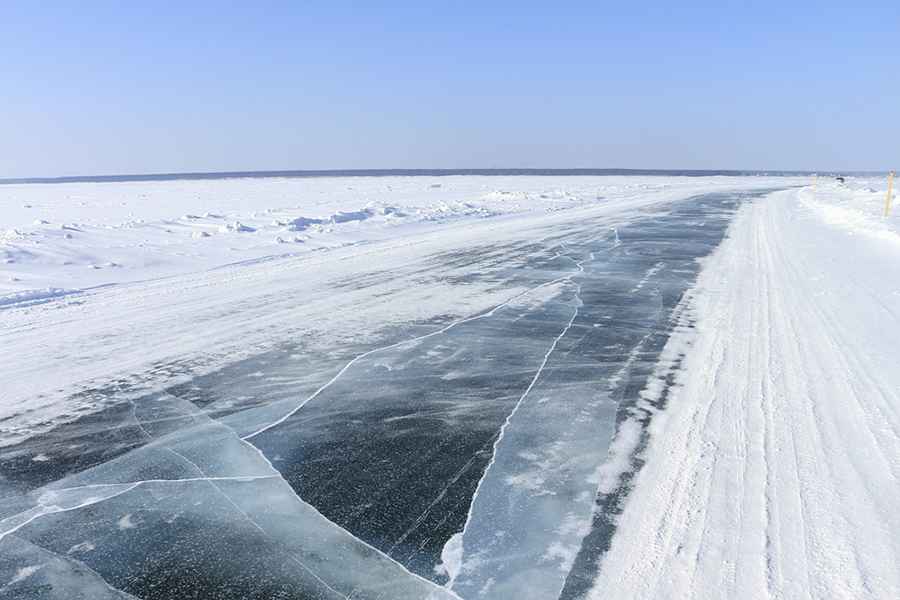Stay Safe on Ice Roads: 6 Rules Every Driver Should Know
Driving on ice roads presents a unique set of challenges and risks that drivers must be aware of to ensure their safety. These roads, often found in regions with freezing temperatures, are constructed on frozen bodies of water, such as lakes or rivers, to provide access to remote areas or serve as seasonal alternatives to traditional routes. Here are 6 key points to consider when driving on ice roads:

1. Risk of Ice Thickness Variability:
One of the most significant risks of driving on ice roads is the variability in ice thickness. Ice thickness can vary depending on factors such as temperature fluctuations, water currents, and snow cover. It's crucial to ensure that the ice is thick enough to support the weight of your vehicle before attempting to drive on it. Ice thickness should be at least several inches thick to safely accommodate passenger vehicles and even thicker for larger vehicles like trucks or buses.
2. Check Ice Conditions:
Before driving on an ice road, always check the current ice conditions and weather forecast for the area. Pay attention to any warnings or advisories issued by local authorities regarding ice safety. Avoid driving on ice roads during periods of thawing or rapidly changing weather conditions, as this can weaken the ice and increase the risk of accidents or breakthroughs. Examples of ice roads include:
Canada: Known for its extensive network of ice roads, particularly in remote northern regions such as the Northwest Territories and Manitoba. The famous Ice Road Truckers TV series features the challenges faced by truck drivers on these icy routes.
Russia: Ice roads are commonly used in Siberia and other cold regions to transport goods and people across frozen rivers and lakes. These roads play a crucial role in connecting isolated communities during the winter months.
Sweden: In Sweden, ice roads are often used to provide access to islands in the Stockholm archipelago and other coastal areas. These temporary roads are created when waterways freeze over, allowing vehicles to travel across the ice.
Finland: Ice roads are a common sight in Finland, where they are used to connect islands and remote coastal areas. The Baltic Sea freezes over during the winter months, creating temporary routes for vehicles to cross between landmasses.
Estonia: Ice roads are occasionally established in Estonia during particularly cold winters, allowing vehicles to cross frozen bodies of water such as lakes and rivers.
USA: In colder regions of the United States, such as Alaska and parts of the Midwest, ice roads are utilized to provide access to remote areas and facilitate transportation during the winter months. These roads are often temporary and can be found across frozen lakes, rivers, and tundra.
3. Maintain a Safe Speed:
When driving on ice, it's essential to reduce your speed and maintain a safe following distance from other vehicles. Ice roads can be slippery and unpredictable, making it challenging to control your vehicle, especially when braking or turning. Drive at a speed that allows you to react quickly to any changes in road conditions and avoid sudden movements that could cause your vehicle to slide or skid.
4. Use Caution When Passing:
Passing other vehicles on ice roads can be hazardous, as it requires moving onto potentially weaker or uneven sections of ice. Only pass other vehicles when absolutely necessary and ensure that there is enough space and visibility to do so safely. Signal your intentions early and pass with caution, watching for any signs of instability or cracking in the ice.
5. Watch for Signs of Weak Ice:
Keep an eye out for signs of weak or unstable ice, such as cracks, pressure ridges, or areas of open water. Avoid driving over these areas and detour around them if possible. If you encounter a section of ice that appears unsafe, turn around and find an alternate route. Remember that ice conditions can change rapidly, so always be vigilant and prepared to react to any potential hazards.
6. Be Prepared for Emergencies:
When driving on ice roads, it's essential to be prepared for emergencies. Carry a well-stocked emergency kit in your vehicle, including items such as blankets, food, water, a flashlight, and a first aid kit. Additionally, make sure your cell phone is fully charged and that you have a reliable means of communication in case you need to call for help.
By following these guidelines and exercising caution and common sense, drivers can safely navigate ice roads and reach their destinations with minimal risk. Always prioritize safety and be prepared for the unique challenges that driving on ice can present.
Image credit: Depositphotos